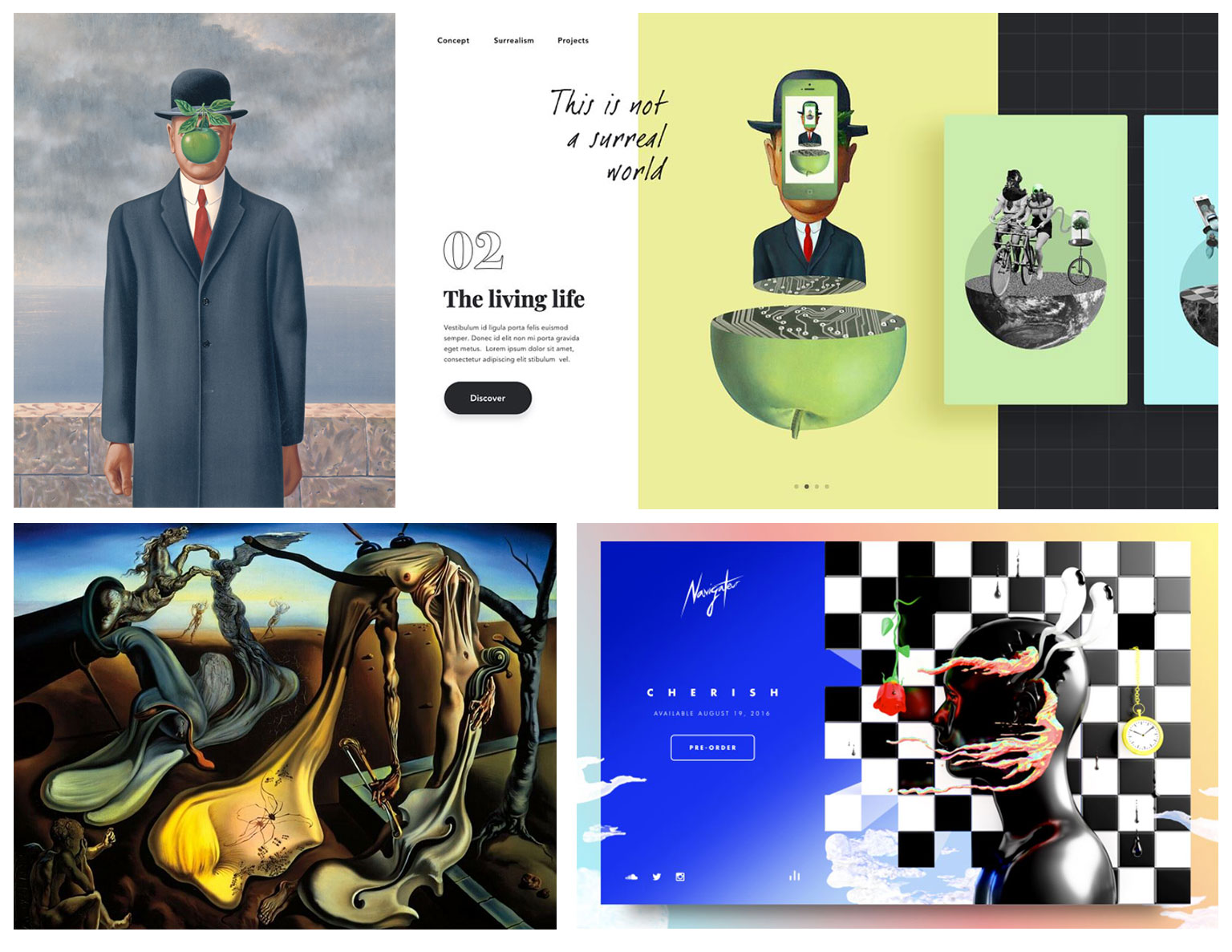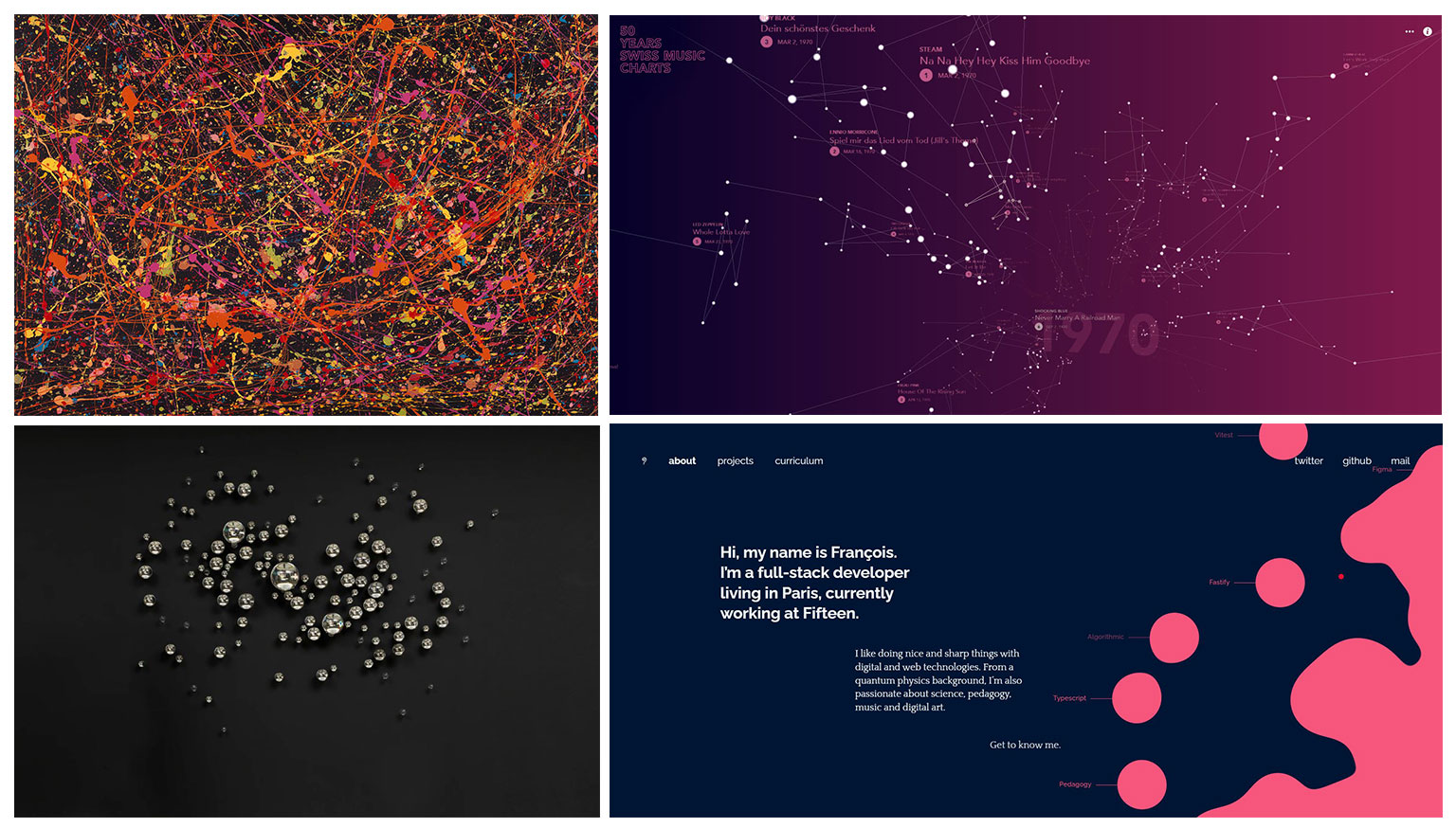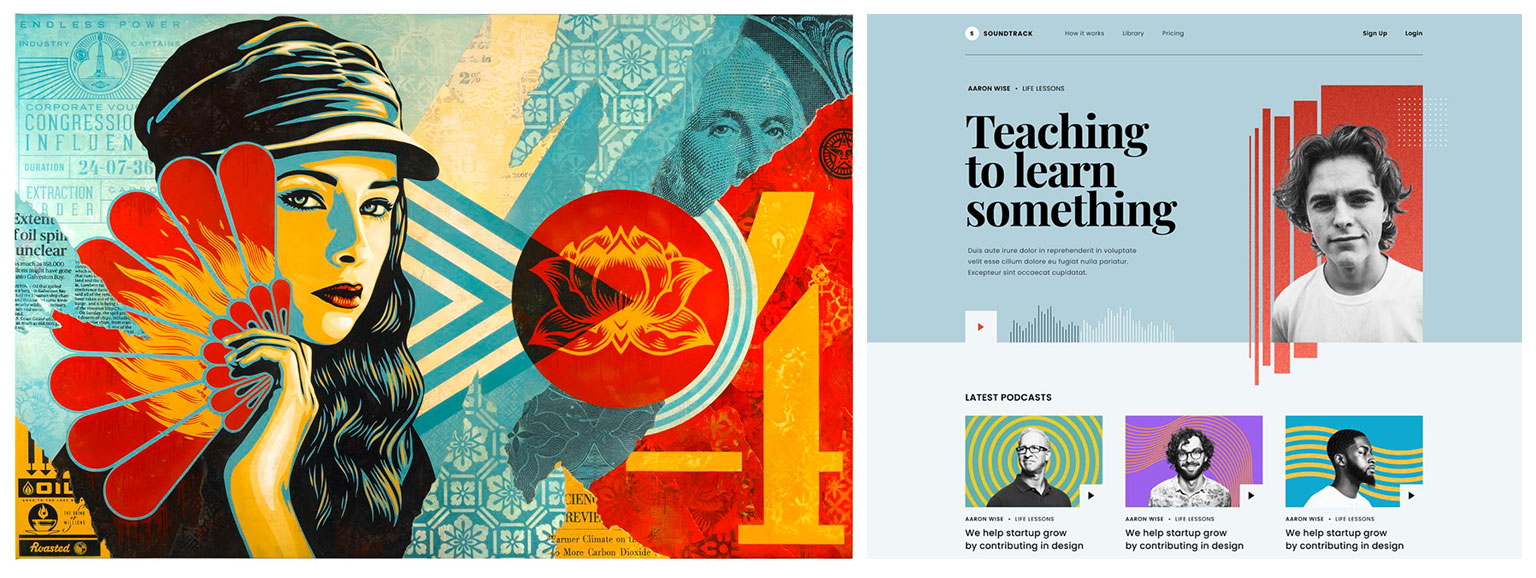Introduction
In the ever-evolving digital landscape, web design is constantly seeking inspiration, and often imports fresh ideas from different art forms. The fusion of technology and creativity has paved the way for innovative and visually captivating websites that leave a lasting impression on visitors. One of the key inspirations for modern web design comes from the world of fine art. Let’s explore how contemporary artists have followed in the footsteps of renowned masters, influencing popular culture, and shaping web design aesthetics.
Abstract Art, Minimalism, and Grid Layouts
The abstract art movement, a groundbreaking shift in the world of art, emerged in the early years of the 20th century, challenging traditional notions of representation and pushing the boundaries of artistic expression. At the forefront of this avant-garde movement were visionary artists like Hilma af Klint, Wassily Kandinsky, Kazimir Malevich, and Piet Mondrian, each delving into the realm of abstraction with a profound quest for the spiritual and the unseen. Piet Mondrian’s style, known as De Stijl, embraces minimalism and a rigid grid structure and still has a traceable influence on web design. Mark Rothko and Garry Fabian Miller are some of the contemporary artists who continued the legacy of colorful minimalism. Web designers have drawn inspiration from abstract artworks, incorporating vibrant color fields and creating websites with serene, uncluttered aesthetics that evoke a sense of calm and balance.

Examples from top to bottom: Malevich / par hasard, Mondrian / Design Your Life, Garry Fabian Miller / Canvas website template
Surrealism and Playful Web Elements
Salvador Dalí‘s surrealist masterpieces challenged reality with dreamlike imagery and unexpected juxtapositions. René Magritte is considered to be one of the key figures in the Surrealist movement, and as an artist, he aimed to distance the object from its prescribed purpose: one of his best-known paintings shows a pipe with the caption “This is not a pipe”. Inka Essenhigh American painter is among the most influential and celebrated painters working today, and her masterly, dreamlike style is often described as “pop-surrealism”. In web design, elements of surrealism have found their way through playful animations, interactive graphics, and imaginative user experiences. Designers inspired by surrealism sometimes also wish to create immersive web experiences that blur the lines between reality and the surreal, leaving visitors enchanted and intrigued.

Examples from top to bottom: Magritte / This is not surreal, Dali / Navigateur Landing Page
Abstract Expressionism and Dynamic UI
Jackson Pollock was a pioneer of abstract expressionism, renowned for his energetic, action-packed paintings created through dripping and pouring paint onto canvas. Contemporary artist Olafur Eliasson, known for his immersive installations and use of light, has also influenced many other artists by inspiring visually engaging and interactive installations that invite visitors to explore and interact with their digital surroundings. Xiyao Wang is one of the most prominent young voices in abstract art, and her paintings are often described as movement captured on canvas, a form of abstract expressionism. This sense of movement and dynamism has inspired web designers to experiment with interactive elements, dynamic backgrounds, and fluid user interfaces.

Examples from top to bottom: Pollock / 50 Years of Swiss Music, Eliasson / Francois Risoud
Synesthesia and Color Psychology
Wassily Kandinsky, a Russian painter, was a key figure in the development of abstract art. He believed that colors and shapes had inherent emotional and spiritual qualities. Contemporary artist James Turrell has reconstructed the sensory synesthesia experience by working directly with light and space to create artworks that engage viewers with the limits and wonder of human perception. Web designers that adopted the synesthesia principles create inspiring websites that use light and color to create immersive, multisensory experiences.

Examples: Turrel / Fully Colored website design
Pop Art and Bold Graphics
Andy Warhol, a leading figure in the pop art movement, celebrated consumer culture and mass media through his vibrant and iconic artworks. His bold use of color and graphic elements has influenced web designers to create eye-catching visuals, use bold typography, and incorporate elements of popular culture into web design. Contemporary artist Shepard Fairey, known for his iconic “Hope” poster and street art, has inspired web designers to infuse social and political messages into their work, adding depth and meaning to modern web designs.

Examples: Fairey / Exploration website design
Closing words
At The Cecily Group, we are always on the lookout for new trends in web design so we can create interfaces that are equally classy and practical. As web design continues to evolve, it finds inspiration in the rich tapestry of contemporary art. Modern web designers and contemporary artists collaborate to create web experiences that blend creativity, innovation, and cultural influences. So, the next time you stumble upon a captivating website, take a moment to appreciate the artistry that went into its creation—a testament to the enduring influence of both historical and contemporary art on the digital canvas.

